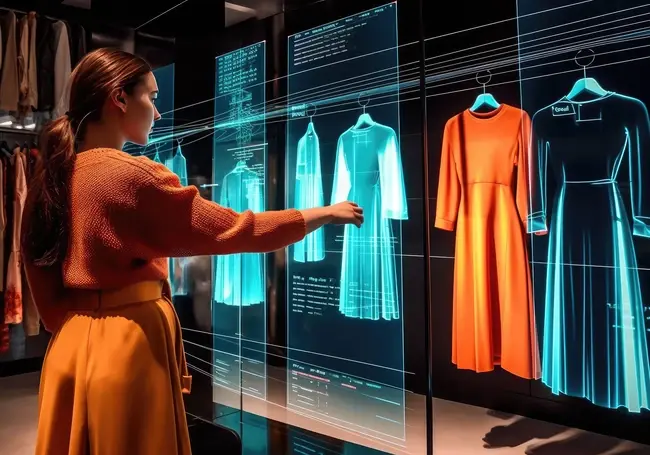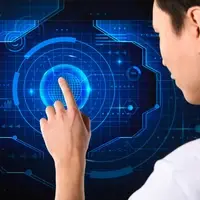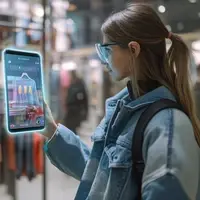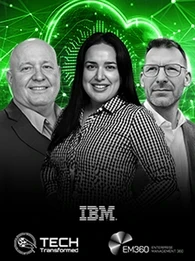
The virtual makeup try-on movement is redefining how we shop for cosmetics. No more messy testers or guesswork—just real-time, hyper-personalized beauty experiences powered by artificial intelligence and augmented reality. Whether you're swatching lipsticks or testing foundations, these digital tools help you find your perfect look with just a phone or webcam.
And the best part? You don’t need to step into a store or download an app. The future of beauty is accessible, inclusive, and oh-so-smart.
How Virtual Makeup Try-On Actually Works
So, how does a screen become your personal makeup mirror? It’s a seamless fusion of smart tech that delivers an effortless, personalized experience.
Face Mapping and Real-Time AR
At the heart of virtual makeup try-on is AI-powered face tracking. These systems use computer vision and deep learning to map over 20 facial landmarks—from your pupils and cheekbones to your jawline. This mapping allows makeup filters to move in sync with your facial expressions, creating a natural, dynamic effect that mirrors real-life application.
The more precise the tracking, the better the experience. For example, when you turn your head or raise your eyebrows, the makeup adjusts fluidly, never looking like a static overlay. This is where AR (augmented reality) takes the spotlight, blending makeup filters with your live image to deliver that “is this real?” kind of magic.
Hyper-Realistic Product Simulation
Face tracking is only one half of the equation. What truly elevates the experience is how accurately these tools simulate the textures, finishes, and tones of real-world products.
High-end algorithms use a mix of light modeling and texture mapping to replicate how makeup reflects light on different skin tones. Whether you're testing a dewy foundation or a metallic eyeshadow, the effect feels remarkably real. Plus, AI continuously learns from user data to enhance color matching, texture replication, and application techniques.
Interactive, Personalized Looks
Once the base tech is in place, the possibilities expand quickly. Users can experiment with hundreds of shades and looks—from a soft glam vibe to a dramatic festival-ready transformation. Some platforms even offer curated collections based on skin undertone, event type, or trending beauty aesthetics.
These features are particularly powerful for shoppers who don’t have access to in-store beauty consultants. The ability to virtually test an entire look—foundation, blush, eyeliner, lipstick—gives users complete control over their appearance without the pressure of in-person sales environments.
Why Shoppers (and Brands) Can’t Get Enough
The rise of virtual makeup try-on isn't just about tech novelty. It’s solving age-old shopping problems in modern ways.
Fewer Returns, Less Waste
Let’s face it—beauty returns are wasteful, especially for used or opened products. Virtual try-on tools reduce uncertainty and help shoppers make more confident choices. That means fewer products ending up in landfills, lower return shipping emissions, and a leaner supply chain overall.
This is a win-win: brands reduce logistical costs, and customers enjoy more satisfaction from their purchases.
Confidence Before You Click “Buy”
With traditional online shopping, there’s always a degree of uncertainty. But with virtual makeup try-on, you're not just looking at a product—you’re seeing how it interacts with your actual features.
This shift in confidence is powerful. It reduces decision fatigue, shortens the time to purchase, and enhances trust between customer and brand.
Built for Every Face
Beauty has long struggled with inclusivity, but AI is helping to level the playing field. Modern algorithms are trained on expansive datasets that include diverse skin tones, facial structures, and age groups. That means a deep lipstick will render differently on deeper skin tones than on lighter ones—accurately and respectfully.
The result? Every face feels seen. Every shopper feels considered.
Share the Glam
Thanks to built-in capture tools, users can take selfies or short clips of their virtual looks and post them instantly on social media. This not only fuels creativity but also becomes a low-effort marketing channel for brands.
In fact, some brands actively encourage social sharing by offering incentives, contests, or community hashtags. It turns beauty discovery into a communal, shareable moment.
Real-World Examples Lighting Up the Industry
Beauty giants aren’t just dabbling in virtual try-ons—they’re investing big:
Maybelline’s Virtual Try-On Tool allows users to experiment with full-face makeup combinations in real-time, boosting experimentation and product discovery.
Burberry Beauty’s Virtual Studio pairs high-precision facial tracking with guided video tutorials, making the tech feel personal and educational.
Sephora’s In-Store 3D Mirrors provide a no-touch, hygienic trial experience—perfect for post-pandemic beauty retail.
Even indie brands are joining the movement by adopting white-label versions of these tools or integrating third-party platforms into their e-commerce sites.
Growth, Trends & What’s Next
The virtual makeup try-on market was valued at $0.74 billion in 2023 and is set to reach $2.1 billion by 2031. That’s a projected CAGR of 23.3%, signaling strong and sustained growth.
What’s driving this expansion?
Mobile-first shopping habits: As Gen Z and Millennials continue to drive beauty spending, their mobile-first behavior aligns perfectly with virtual try-on accessibility.
App-free experiences: More platforms are opting for browser-based try-ons, eliminating friction for users who don’t want to download yet another app.
Smarter AI integration: Brands are tapping into context-aware AI that suggests looks based not just on facial features but on mood, lifestyle, even local weather.
Shopper Psychology and the Power of Personalization
There’s something inherently intimate about makeup—it’s tied to self-expression, confidence, and identity. That’s why virtual makeup try-on resonates on a deeper level than other forms of online shopping.
When people see themselves transformed in real time, they begin to imagine new possibilities: bolder choices, new aesthetics, more authenticity. AI personalization taps into this emotional layer, offering looks tailored not just to appearance but also to the vibe each user is trying to create.
From a psychological standpoint, this strengthens emotional attachment to products, increasing the likelihood of purchase and brand loyalty.
Why This Tech Is Changing the Game
The emergence of virtual makeup try-on is not a short-term trend—it’s a foundational shift in how people discover, try, and buy beauty.
It solves practical issues (like hygiene and convenience), emotional challenges (like decision anxiety), and even social ones (like inclusivity and community). By integrating seamlessly into the shopping journey, it makes beauty more accessible and enjoyable.
For brands, this means a new way to connect with customers. For users, it means greater freedom to explore and express.
Final Thoughts
AI-powered virtual makeup try-on tools are revolutionizing the way we experience beauty. With real-time accuracy, inclusive design, and zero-hassle access, they offer a new kind of beauty counter—one that lives in your browser and responds to your unique face.
No lines, no mess, no guesswork—just your perfect look, instantly.












Comments ( 0 )